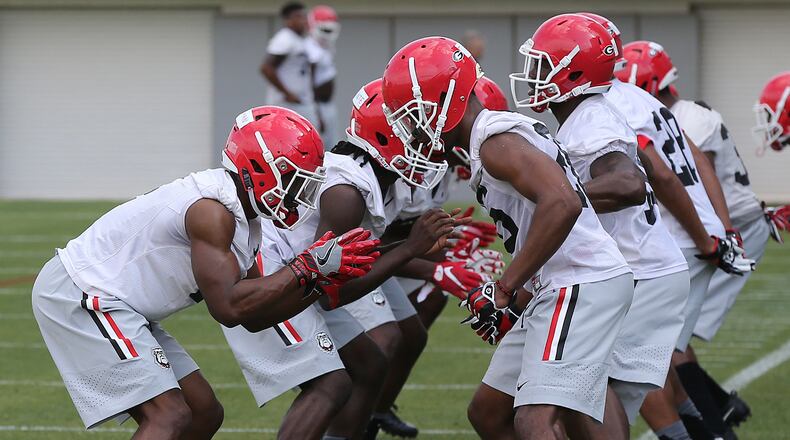Georgia football players have been on campus and working out for a week. Meanwhile, a segment of athletic department employees were allowed to return to their work spaces Monday.
Normalcy remains a distant goal for the Bulldogs, and it’s going to take more time for UGA athletics to get back to full speed. But at this point at least, they remain on track to do so.
“We’re still cranking stuff out, still moving forward. Everything’s still moving ahead,” Georgia Athletic Director Greg McGarity said Monday. “We’re probably at 25 percent of our work force in place throughout athletics. They can work 75 percent of the week. Another certain population of our staff can work half-time this week.”
It’s the “first phase” of Georgia’s plan to get everybody back to work. UGA athletics has about 300 full-time employees.
At this point, most of the focus remains on those supporting football. Players in that sport made their way back to Athens two weeks ago. After clearing physicals and COVID-19 testing, they were allowed to begin voluntary workouts, as were other SEC teams, June 8.
Likewise, all coaches, strength-and-conditioning staff and sports-medicine personnel have been joined by equipment managers and other support staff at the Butts-Mehre complex.
However, UGA’s other sports facilities remain closed. Basketball players, volleyball players and athletes in other fall sports are next to return to campus. But the SEC is holding off on their return until it sees how the return goes for football.
At least 100 players are visiting McWhorter Practice Fields, the weight room and sports-medicine training facility daily. Meanwhile, the facilities and custodial staff charged with keeping those environments sterilized and safe remains understaffed overall and therefore is focusing all its efforts on tracking and keeping football players and personnel safe.
McGarity declined to say Monday whether any of the athletes or staff that have returned have tested positive for COVID-19 or was symptomatic for the coronavirus. The AJC has requested testing results via the Georgia Open Records Act, but so far have not received a response. UGA has to report its results to the local public health administrations, but student health information is protected by HIPAA.
Last week, faculty and staff received a briefing from UGA outlining a phased return that includes various seating models for Sanford Stadium. One phase is for no fans; another includes social distancing of six feet between limited-size seating groups with restrictions on the use of restrooms, concessions and other amenities; yet another allows for a larger number of fans; and the final phase is full capacity.
McGarity downplayed the report and reiterated that he and President Jere Morehead remain hopeful of full-capacity football in the fall.
“It just depends on how mass gatherings are going to be defined,” McGarity said. “The governor will define that for us, and we’ll react accordingly.”
The question remains how Georgia will decide who will attend if the attendance allowed is below Sanford Stadium’s capacity of 92,746. Will it be based simply on donor level or will it be decided in another manner?
“We have a lot of options, but I don’t want to talk about those now,” McGarity said. “I’m sure around Aug. 1 there will be more definite information, hopefully.”
Georgia opens the season at Mercedes-Benz Stadium on Sept. 7 and doesn’t host its first home game until Sept. 12.
“So we have, what, 75 days until the first game?” McGarity said. “We have time on our side. There’s no reason to make any announcements until we know more.”




